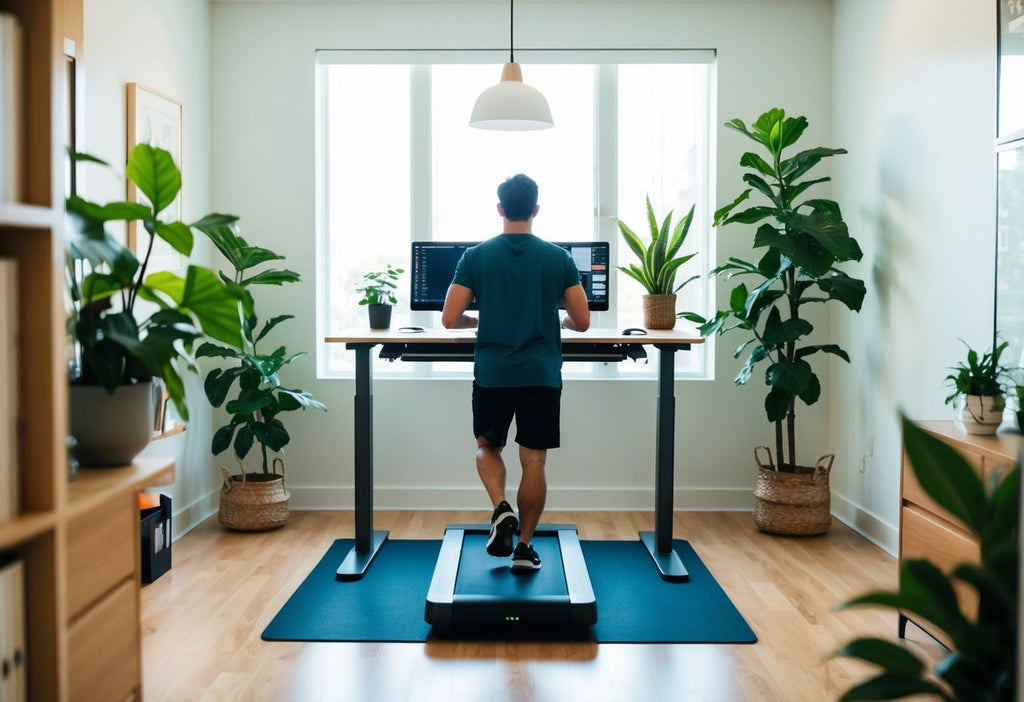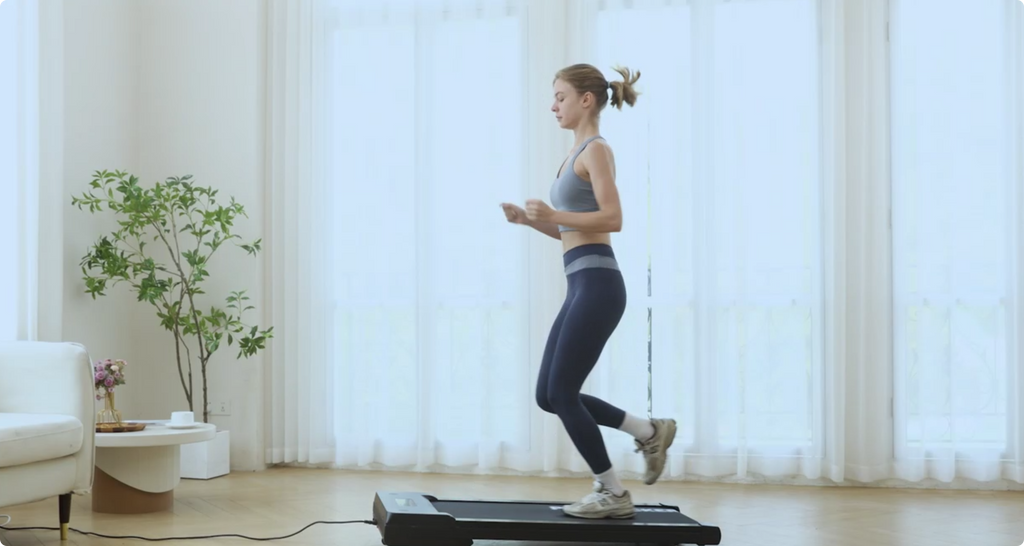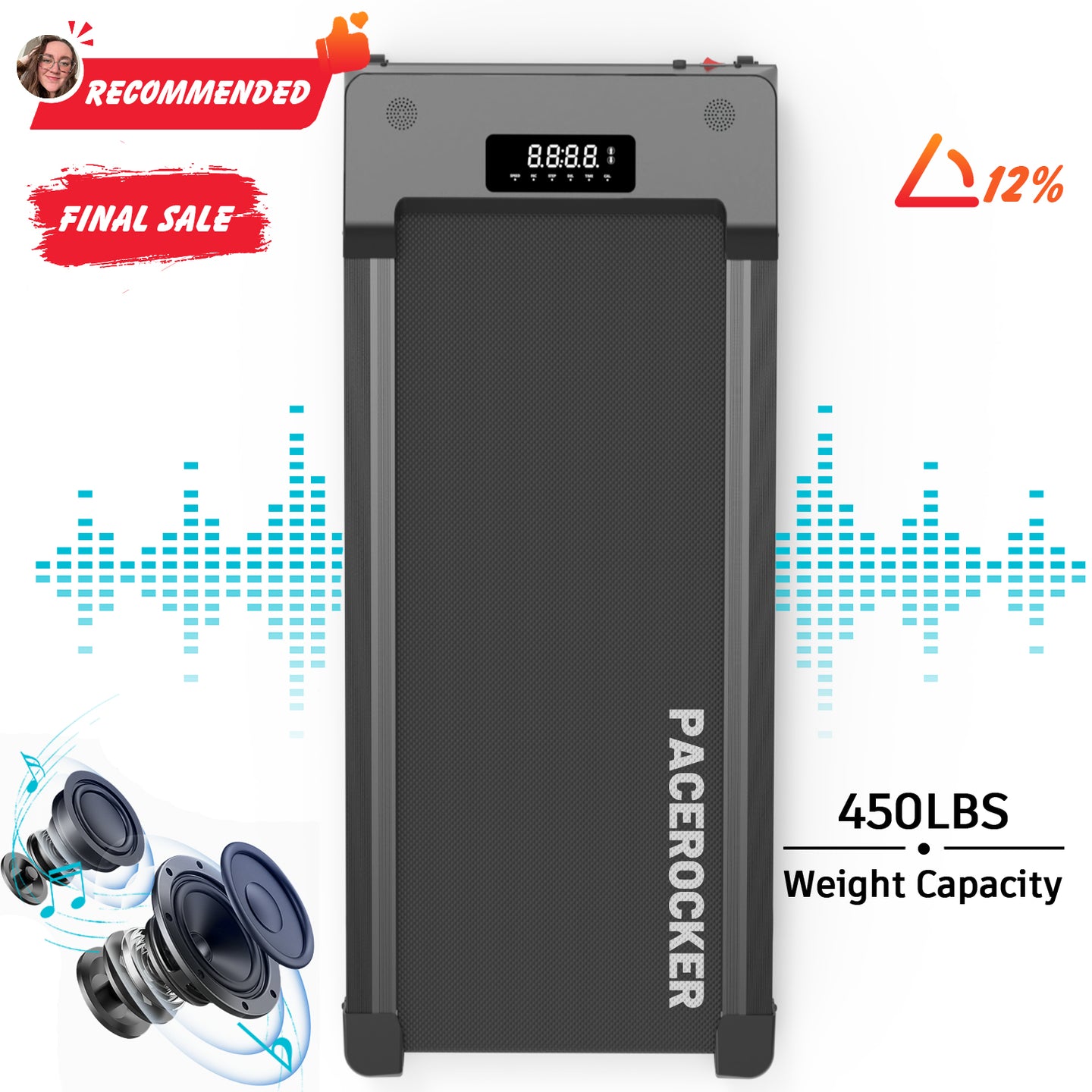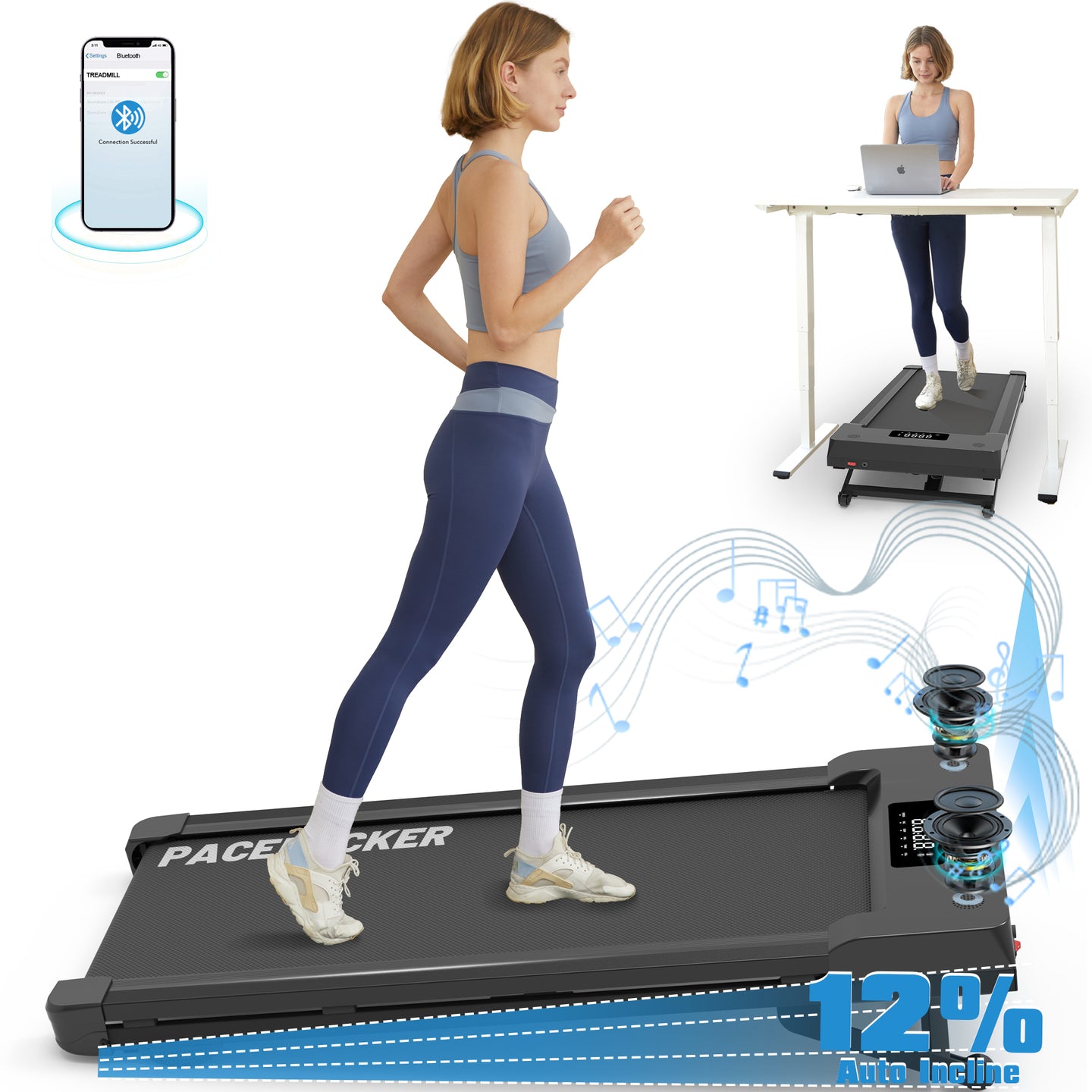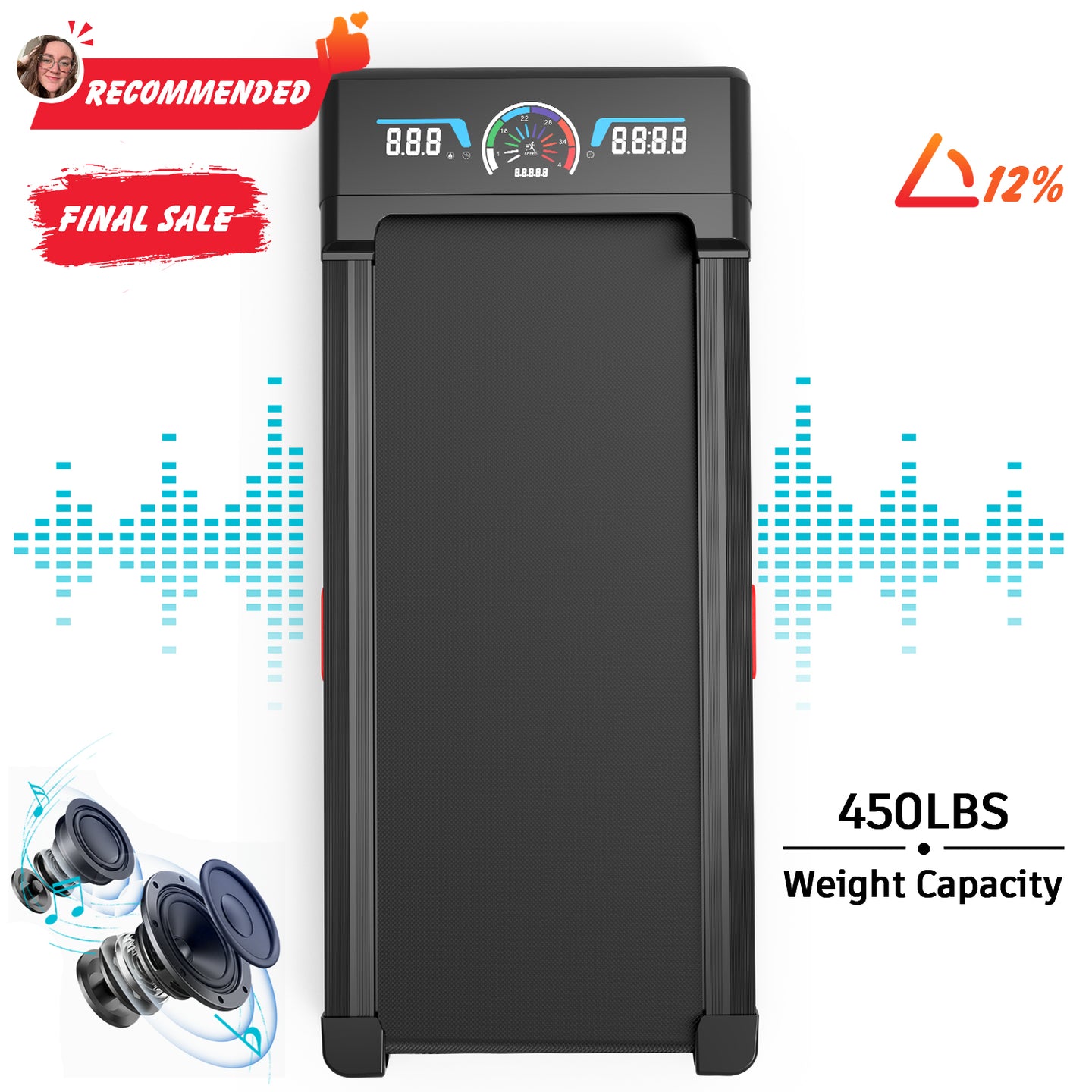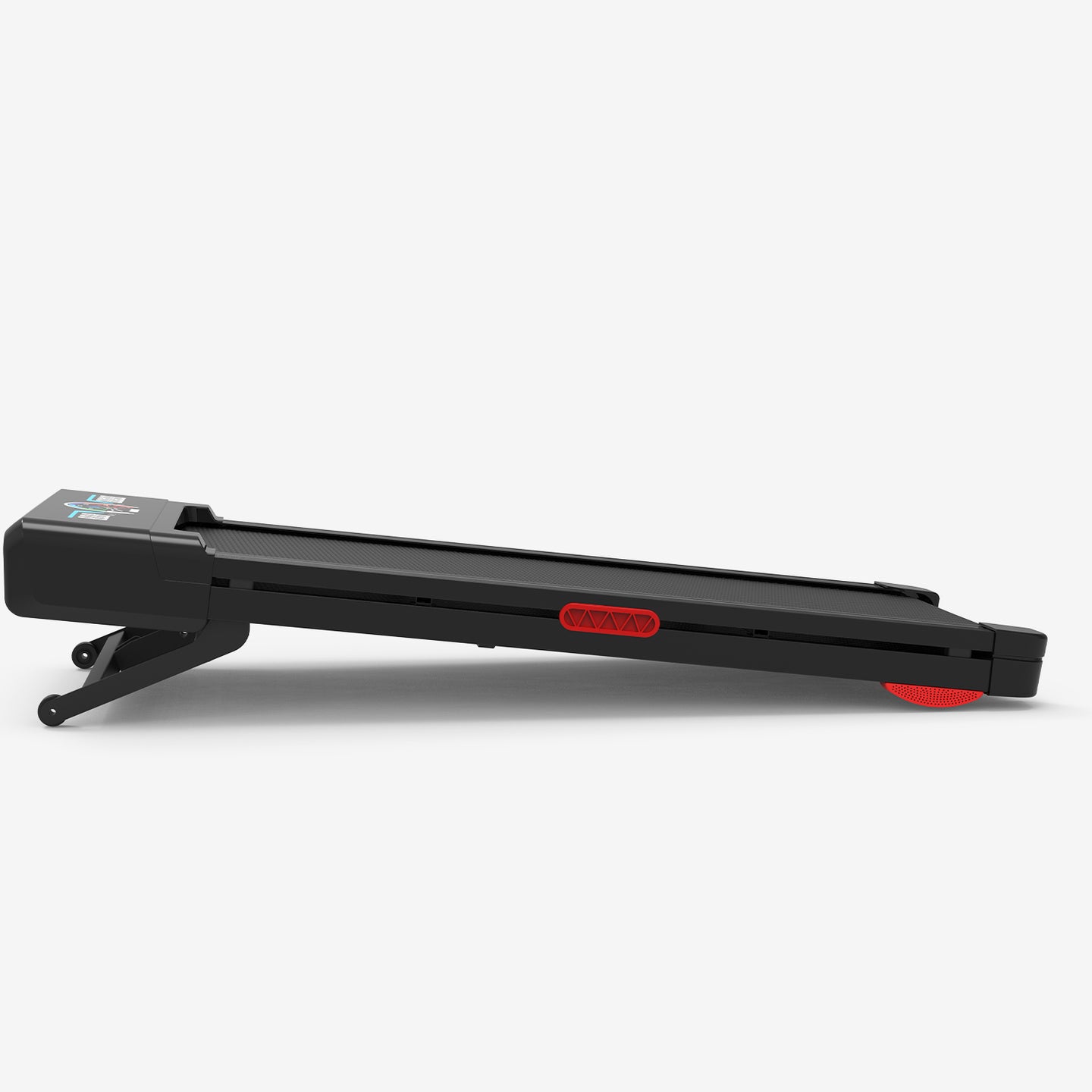How to Incorporate a Walking Pad Treadmill into Your Daily Routine
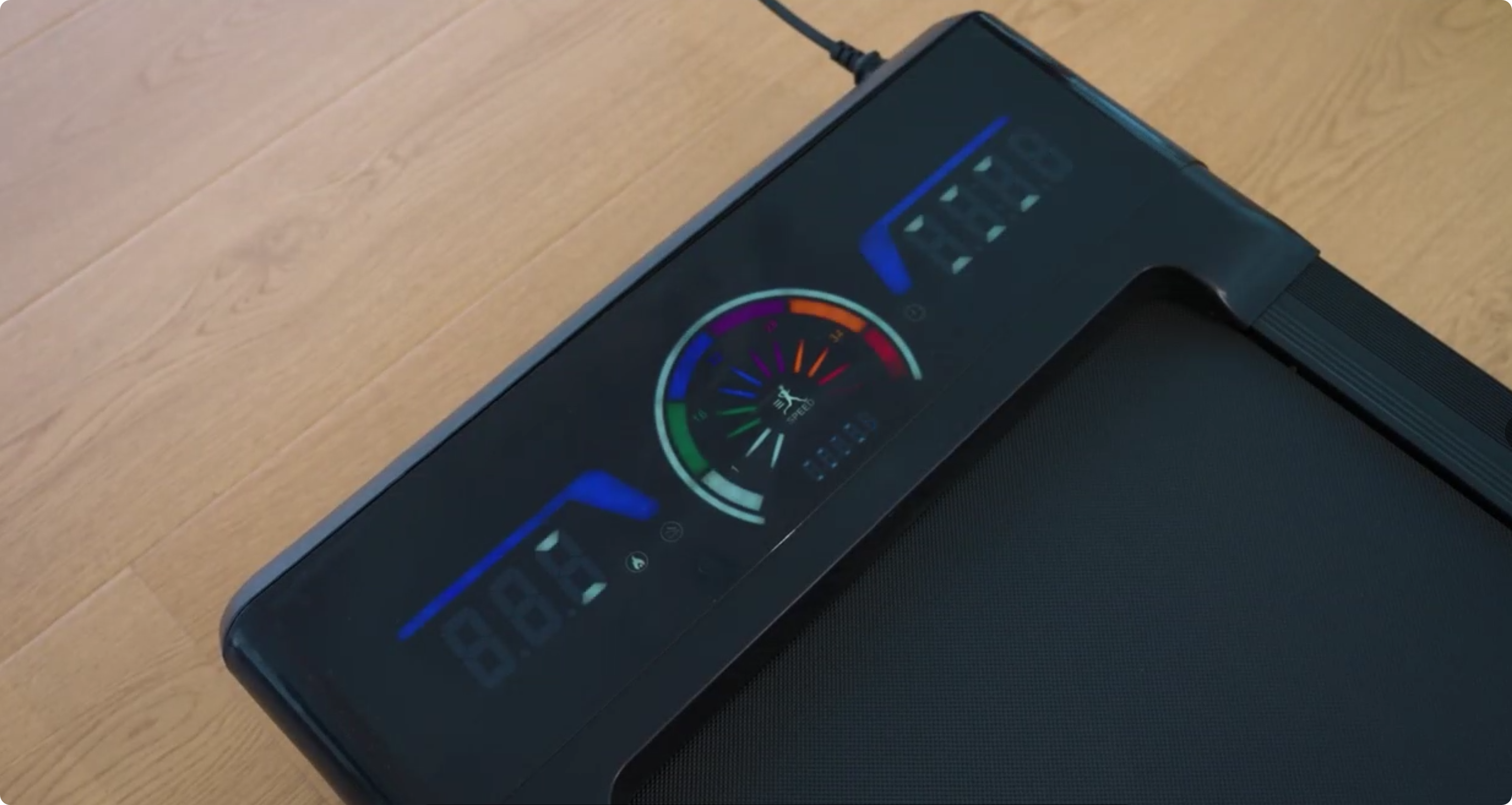
Don’t forget to check out our Pacerocker, Trailviber, and Trailviber Auto Incline walking pad treadmills.
Walking pad treadmills are revolutionizing how we stay active while working or relaxing at home. These compact, versatile devices fit seamlessly into our living spaces, allowing us to sneak in extra steps throughout the day.
We've found that using a walking pad treadmill doesn't require a major lifestyle overhaul. It's as simple as setting it up near our desk or in front of the TV and taking short walking breaks. This approach helps us combat the negative effects of prolonged sitting without disrupting our work or leisure time.
With a walking pad treadmill, we can easily hit our daily step goals, even on busy days when we can't make it to the gym. It's a practical solution for those of us looking to maintain an active lifestyle in today's fast-paced world.
Key Takeaways
- Walking pad treadmills offer a convenient way to increase daily physical activity
- Integrating short walking sessions can improve health and productivity
- Consistent use of a walking pad treadmill helps achieve fitness goals efficiently
Benefits of Integrating a Walking Pad Treadmill into Your Life
We've discovered that incorporating a walking pad treadmill into our daily routine can be a game-changer for our health and productivity. These compact devices allow us to stay active while working or watching TV, effortlessly increasing our daily step count.
One of the primary advantages is improved cardiovascular health. Regular walking on a treadmill can lower blood pressure, reduce the risk of heart disease, and boost our overall fitness levels.
Weight management becomes more achievable with a walking pad. We can burn extra calories throughout the day without dedicating specific time to exercise. This consistent, low-impact activity helps maintain a healthy weight or support weight loss goals.
Mental health benefits are another plus. Walking releases endorphins, which can reduce stress, anxiety, and depression. We often find our mood lifted after a session on the walking pad.
Increased productivity is a surprising benefit. Many of us report better focus and creativity when walking while working. It's an excellent way to combat the negative effects of prolonged sitting.
Additional benefits include:
- Enhanced circulation
- Improved posture
- Better sleep quality
- Increased energy levels
Choosing the Right Walking Pad Treadmill
Selecting an ideal walking pad treadmill involves considering several key factors. We'll explore the essential aspects to help you make an informed decision.
Size and Portability Considerations
When choosing a walking pad treadmill, size matters. We recommend measuring your available space before making a purchase. Most walking pads are designed to be compact, typically ranging from 50-60 inches in length and 20-30 inches in width.
Weight is another crucial factor. Lighter models (30-50 lbs) are easier to move and store. Some units feature wheels for improved mobility.
Foldability is a game-changer for small spaces. Many walking pads can be folded to half their size, fitting under beds or in closets.
Features and Technology
Modern walking pad treadmills come packed with useful features. Look for models with adjustable speed settings, usually ranging from 0.5 to 4 mph for walking.
A clear, easy-to-read display is essential. It should show speed, distance, time, and calories burned.
Some advanced models offer:
- Bluetooth connectivity for syncing with fitness apps
- Remote controls for easy speed adjustments
- Safety features like auto-stop sensors
- Incline options for varied workouts
Noise level is worth considering, especially if you plan to use the treadmill while working or watching TV.
Budget and Quality
Walking pad treadmills range from budget-friendly options to high-end models. We've found that prices typically fall between $300 and $1000.
Cheaper models might lack durability or advanced features. Mid-range options ($500-$700) often offer a good balance of quality and functionality.
Consider the warranty when assessing value. A longer warranty period often indicates the manufacturer's confidence in their product.
Read user reviews to gauge real-world performance and durability. Pay attention to comments about motor quality, as it's a crucial component.
Investing in a higher-quality model can save money in the long run by reducing the need for repairs or replacements.
Creating a Daily Walking Plan
Incorporating a walking pad treadmill into our daily routine requires thoughtful planning and consistent effort. We'll explore how to set achievable goals, structure our walking sessions, and monitor our progress effectively.
Setting Realistic Goals
We need to start by defining clear, attainable objectives for our walking routine. It's best to begin modestly and gradually increase our targets. A good initial goal might be 15-20 minutes of walking per day, 3-4 times a week.
As we build stamina, we can aim for 30 minutes daily, 5 days a week. This aligns with health recommendations for adults. We should consider our current fitness level and schedule when setting goals.
It's crucial to be specific with our targets. Instead of vague aims like "walk more," we can set concrete goals such as "walk 10,000 steps daily" or "walk for 30 minutes at 3 mph."
Structuring Your Walking Sessions
To make the most of our walking pad treadmill, we need to plan our sessions effectively. We can start with a 5-minute warm-up at a slow pace to prepare our muscles.
Next, we'll increase the speed for the main part of our walk. This could be a steady pace or intervals of faster and slower walking. For example:
- 2 minutes at 2.5 mph
- 1 minute at 3.5 mph
- Repeat 5-10 times
We should end with a 5-minute cool-down at a relaxed pace. This helps our heart rate return to normal gradually.
It's beneficial to vary our walking routines to prevent boredom and challenge different muscle groups. We can adjust incline settings or try different walking patterns.
Tracking Your Progress
Monitoring our walking achievements keeps us motivated and helps us adjust our plan as needed. We can use a fitness tracker or smartphone app to record our daily steps, distance, and calories burned.
A simple table can help us log our progress:
|
Date |
Duration |
Distance |
Steps |
Notes |
|
12/1 |
30 min |
1.5 mi |
3500 |
Felt energized |
|
12/2 |
25 min |
1.2 mi |
3000 |
Busy day, shorter walk |
We should review our logs weekly to see improvements and identify areas for growth. Celebrating small victories, like consistently meeting our daily step goal, boosts our motivation.
Setting mini-challenges, such as increasing our weekly step count by 5%, adds excitement to our routine. We can also track how our walking habit affects our overall well-being, noting improvements in mood, energy levels, or sleep quality.
Incorporating Walking Sessions into Your Workday
Walking during work hours boosts productivity and health. We'll explore how to seamlessly integrate walking into your daily routine at the office.
Using a Walking Pad at a Standing Desk
Walking pads fit neatly under standing desks, allowing us to move while we work. We can start with short 10-minute sessions, gradually increasing duration as we build stamina. It's crucial to maintain proper posture and adjust the desk height for comfort.
For tasks requiring focus, we recommend a slower pace of 1-2 mph. During conference calls or brainstorming sessions, we can pick up the pace to 2-3 mph. Remember to wear comfortable shoes and keep a water bottle handy.
Scheduling Walking Breaks
We can set reminders to take regular walking breaks throughout the day. A good rule of thumb is a 5-minute walk every hour or a 15-minute stroll every two hours.
These breaks are perfect for quick tasks like returning calls or reviewing emails on our phones. We can also use this time for mini-meetings with colleagues, combining exercise with work discussions.
To stay motivated, we might track our daily steps and set achievable goals. Starting with 5,000 steps and gradually increasing to 10,000 can make a significant difference in our overall health and energy levels.
Maintaining Your Walking Pad Treadmill
Proper maintenance is crucial for keeping your walking pad treadmill in top shape. Let's explore the key aspects of cleaning and upkeep to ensure its longevity and optimal performance.
Regular Cleaning
We recommend wiping down the treadmill belt after each use with a damp cloth. This removes sweat and dirt, preventing buildup that could affect the machine's performance.
For a deeper clean, use a mild soap solution weekly. Avoid harsh chemicals that might damage the belt or other components.
Don't forget to clean under the belt monthly. Unplug the machine, loosen the belt, and gently wipe the deck underneath. This prevents debris accumulation that could interfere with smooth operation.
Vacuum around the treadmill regularly to keep dust and lint from entering the motor compartment.
Inspection and Maintenance
We suggest checking belt alignment and tension every month. If the belt slips or isn't centered, adjust it according to the manufacturer's instructions.
Lubricate the belt as recommended in your user manual, typically every 3-6 months. This reduces friction and extends the life of both the belt and motor.
Inspect all visible screws and bolts quarterly, tightening any that have loosened. This prevents unwanted movement and potential damage.
Listen for unusual noises during operation. If you hear grinding or squeaking, it might indicate a need for professional servicing.
Check the power cord for any signs of wear or damage before each use to ensure electrical safety.
Overcoming Challenges and Staying Motivated
Incorporating a walking pad treadmill into our daily routine can present obstacles, but with the right strategies, we can overcome them and stay on track. Let's explore some effective approaches to tackle common challenges.
Dealing with Boredom
Walking on a treadmill can sometimes feel monotonous. To combat this, we can try listening to engaging podcasts or audiobooks. These provide mental stimulation while we walk, making the time pass more quickly.
Another option is to create varied playlists with upbeat music that matches our walking pace. This can help us maintain a consistent rhythm and boost our mood.
We might also consider setting up our walking pad in front of a TV or tablet. Watching our favorite shows or educational content can make our walking sessions more enjoyable and productive.
Ensuring Consistency
Maintaining a regular walking routine requires commitment. One effective strategy is to schedule our walking sessions at the same time each day. This helps establish a habit and makes it easier to stick to our plan.
Using a habit tracker app or a simple wall calendar can be motivating. We can mark each day we complete our walking goal, creating a visual representation of our progress.
Setting realistic goals is crucial. Starting with short, achievable sessions and gradually increasing duration or intensity can help us build confidence and avoid burnout.
Partnering with a friend or family member for virtual walking challenges can add a fun, competitive element. This social aspect can boost our motivation and accountability.
Integrating Walking Workouts with Other Exercises
Walking pad workouts can seamlessly blend with various exercises to create a well-rounded fitness routine. We've found that combining walking with strength training offers excellent results.
Try alternating between walking intervals and bodyweight exercises like squats, lunges, or push-ups. This approach keeps your heart rate elevated while building muscle strength.
For yoga enthusiasts, a walking warm-up can prepare the body for a more intense practice. Start with a 10-minute walk before flowing through your favorite yoga sequence.
Cardio fusion ideas:
- 5 minutes walking, 1 minute jumping jacks (repeat 3 times)
- 10 minutes walking, 5 minutes cycling (alternate for 30 minutes)
Incorporate balance exercises by doing single-leg stands or heel-to-toe walks during your walking pad sessions. This enhances stability and core strength.
We recommend using a resistance band for upper body workouts while walking. Perform bicep curls, shoulder presses, or tricep extensions to maximize your time.
Remember to stretch after your walking workouts. This helps improve flexibility and reduces the risk of muscle soreness.
Understanding the Limitations of Walking Pads
Walking pads offer a convenient way to stay active, but they come with certain constraints. We've found that space can be an issue, as even folded models require storage room.
Weight capacity is another factor to consider. Most walking pads support up to 220-265 pounds, which may not suit everyone's needs.
Speed is limited on these devices. They typically max out at 3.7-4 mph, making them unsuitable for running or intense workouts.
Noise levels can be a concern, especially in shared living spaces or apartments. While generally quieter than traditional treadmills, walking pads still produce some sound.
Battery life is worth noting for cordless models. Many offer 2-3 hours of use per charge, which might not be enough for heavy daily use.
Some users report difficulty with balance due to the narrower belt width compared to standard treadmills. This can take some getting used to.
Incline features are often absent on walking pads, limiting workout variety and intensity. For those seeking more challenging exercises, this could be a drawback.
Durability can vary between models. We've noticed that some budget-friendly options may not withstand long-term, heavy use as well as pricier counterparts.
Sharing the Walk: Engaging Family and Friends
Walking with a treadmill pad doesn't have to be a solitary activity. We can make it more enjoyable by involving our loved ones. Here are some fun ways to share the experience:
-
Family challenges: Set up friendly step competitions among family members. Use fitness trackers to compare daily steps and celebrate achievements together.
-
Virtual walking buddies: Connect with friends remotely using video calls while walking. It's a great way to catch up and stay motivated.
-
Group workout sessions: Invite friends over for group walking sessions. Take turns using the treadmill pad while others do complementary exercises.
-
Walking book club: Start a book club where discussions happen while walking. It's a unique way to combine mental and physical exercise.
-
Pet playtime: If you have a dog, let them walk or play nearby while you use the treadmill pad. It's quality time for both of you.
Remember to adjust the treadmill speed to accommodate different fitness levels when sharing with others. Safety should always come first.
By involving family and friends, we transform our walking routine into a social activity. It adds fun, accountability, and motivation to our fitness journey.
Frequently Asked Questions
Walking pad treadmills offer numerous benefits and can be seamlessly integrated into daily routines. Let's address some common questions about using these versatile fitness tools effectively.
What are the top benefits of using an under desk treadmill during work hours?
Under desk treadmills boost productivity and health simultaneously. We've found they increase energy levels, improve focus, and reduce sedentary time. They also help burn calories, enhance circulation, and reduce back pain from prolonged sitting.
What is the optimal duration for walking on a walking pad each day to see fitness results?
Aim for 30-60 minutes of walking daily on your pad. Start with shorter sessions and gradually increase. We recommend breaking it up into 10-15 minute intervals throughout the day for better adherence and to avoid fatigue.
Can you multitask effectively, such as typing, while using a walking pad treadmill?
Yes, with practice. Start at a slow pace, around 1-2 mph. We've found that light tasks like reading emails or taking calls are easiest to manage while walking. More complex work may require slowing down or pausing the treadmill.
How do you safely integrate a walking pad treadmill into a standing desk setup?
Ensure your desk is at the correct height for comfortable typing. We recommend using an anti-fatigue mat for stability. Start with short walking sessions and gradually increase duration. Keep the area around the treadmill clear of obstacles.
What should you look for when choosing the best foldable walking pad for small spaces?
Consider size, weight capacity, and noise level. Look for models with compact folding designs and wheels for easy storage. We prioritize walking pads with smooth acceleration, decent speed range, and sturdy construction.
What are the guidelines for using a walking pad to ensure an effective low-impact workout?
Maintain good posture and engage your core while walking. Vary your speed and incline if available. Stay hydrated and listen to your body. Wear comfortable, supportive shoes to prevent strain on your feet and legs.
Easily integrate a walking pad treadmill into your busy routine to stay active. Perfect for professionals looking to improve fitness without disrupting daily tasks.


